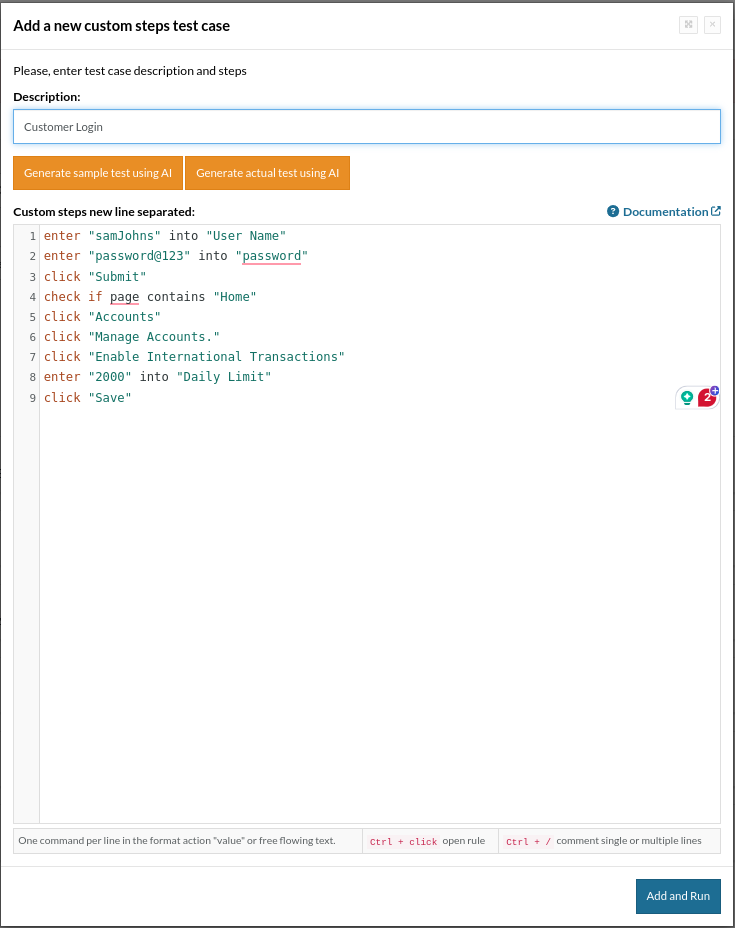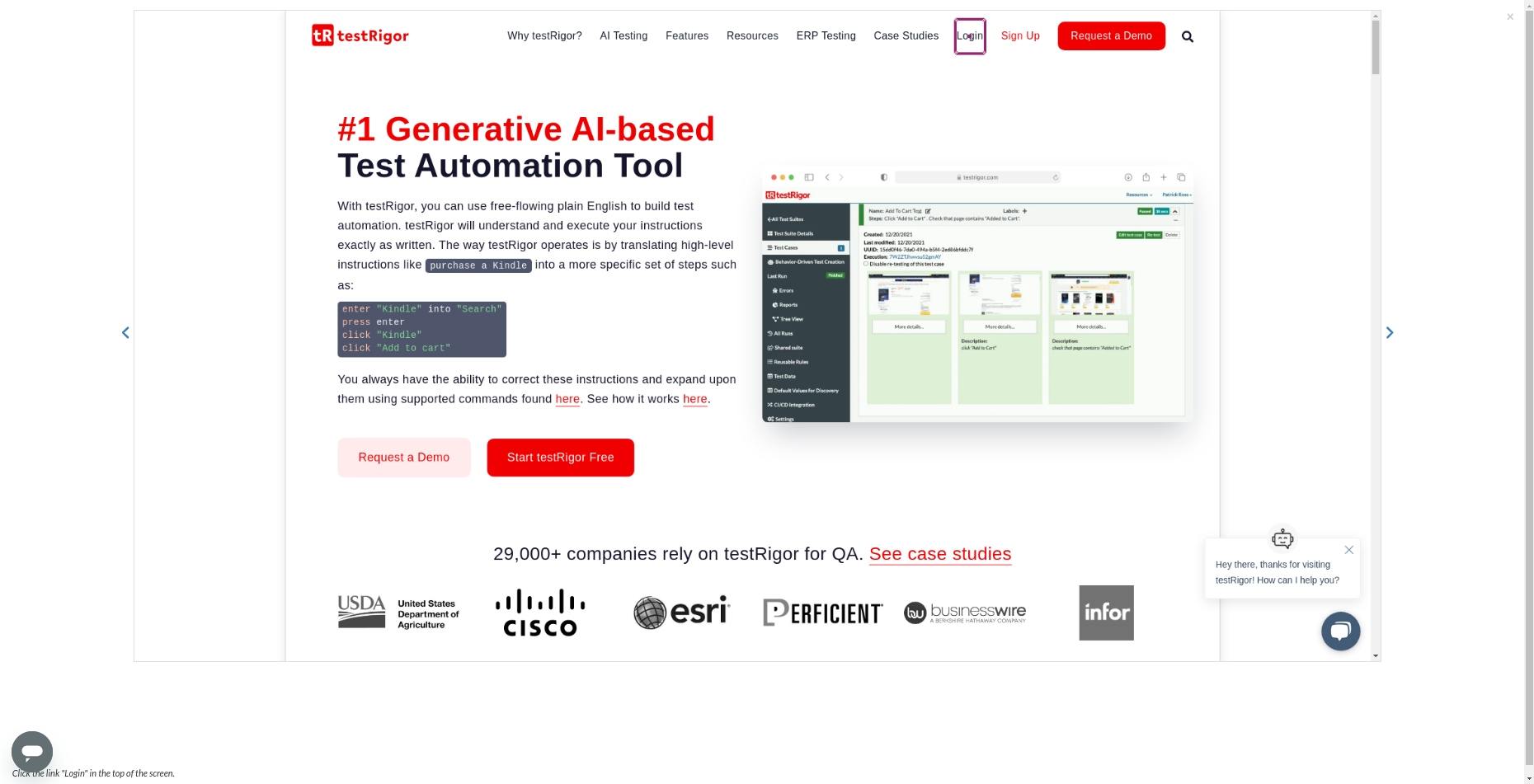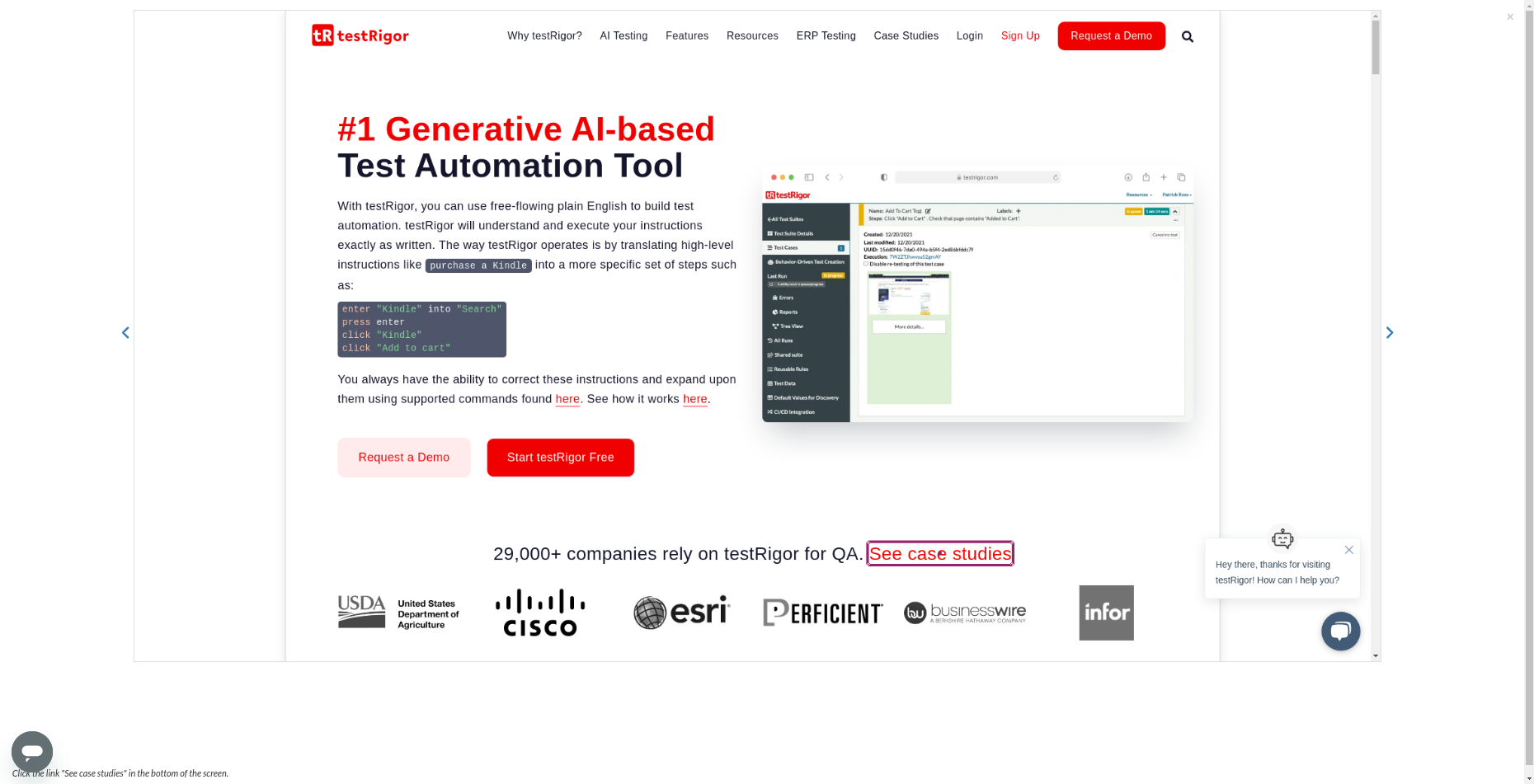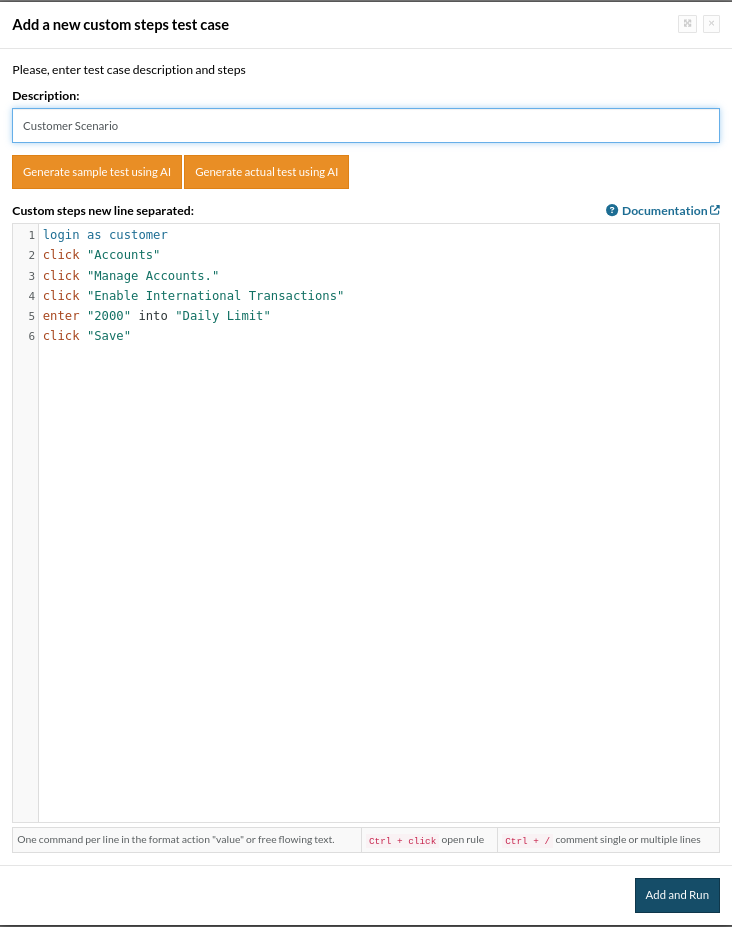Decrease Test Maintenance Time by 99.5% with testRigor
One of the worst nightmares of using traditional programming automation is test maintenance.
Due to this, many QA teams invest time and effort, which incur more costs and reduce the time for developing new scripts. There are many factors that affect test maintenance; let’s discuss the key reasons:
Handling UI Changes
- Frequent UI Changes: Applications often undergo UI changes. These changes can break existing tests, requiring them to be updated or rewritten.
- Selectors and Locators: As the UI structure changes, it’s mandatory to update the element locators like IDs, XPaths, CSS selectors, etc., so that the test scripts won’t fail. This becomes a time-consuming process, and the reliability of automation reduces as these tests produce false positive bugs.
Refactoring Test Code
- Code Duplication: As the test suite grows, the chances of code duplication are high. Multiple people will be working on code maintenance or creating new test cases, so similar actions or checks can be repeated across multiple tests. This makes maintenance more challenging.
- Complex Scripting: Another major problem is code complexity. As the code size increases, different team members create the scripts, and based on the functionality changes, many validations are added to the same functionality, making it more complex to debug or even to understand the code.
Managing Test Data
Tests often require specific data to run correctly. Managing this test data, especially in dynamic and complex applications, can be difficult. Keeping test data up-to-date and ensuring it’s in the correct state for tests can add to the maintenance burden.
High Maintenance Costs
Maintaining a large suite of automated tests can be time-consuming and expensive. The effort required to update tests to keep up with application changes can detract from other important tasks, such as developing new features or improving existing ones.
Flaky Tests
They are the tests that sometimes pass and sometimes fail without any changes to the code. These are often caused by timing issues, environmental dependencies, or other non-deterministic factors. Flaky tests reduce confidence in the test suite and require continuous effort to diagnose and fix.
How testRigor Redefines Test Maintenance
testRigor reduces maintenance effort by providing multiple options to make the scripting easy and robust. Let’s see how testRigor streamlines the test maintenance process.
Plain English Test Scripts
Traditional automation tools depend on programming languages for test script creation. As the test script repository increases, the code complexity also increases. The more extensive code base also makes it difficult to debug the code. The advantage of testRigor is that we can create test scripts in plain English. So, you can create test scripts just like you create your manual test cases and run them with small tweaks to match testRigor’s commands.
You can start creating test scripts even before the developer develops the application, supporting shift-left testing. Since the scripts are in English, anyone can edit or update the test cases. Even if a team member does not have a technical background, they can modify the test scripts flawlessly.
Let’s see a sample code to understand this.

In the above example, the test script looks more like a user interaction. This is achieved with the help of AI. Integrating with AI helps to create tests that reflect actual user behavior, ensuring that the software is tested in a way that aligns with real-world usage patterns. This can lead to the discovery of issues that might have been missed by more abstract or theoretical test cases.
Also, these tests are easily readable/maintainable by any stakeholder and super easy to execute. Even if the developers have not started coding, with the support of wireframes, testers can create automation scripts with minimal maintenance effort.
Element Locator
Unlike traditional tools, which rely on the DOM properties of elements to locate them, testRigor doesn’t use element locators. Then, the question arises: How testRigor locates elements?.
click the link "Login" in the top of the screen
So, the execution result will be:

click the link "See case studies" in the bottom of the screen
The result will be:

In all the above examples, there is no mention of the element properties, we have just mentioned the element name or its relative position. To know more about referencing elements using testRigor, you can go through this article – How to reference elements by UI position using testRigor.
Re-Usable Rules
Another way to reduce test maintenance is by creating reusable rules. You might have heard about the reusable functions in traditional automation tools. Though, those scripts get complex when more validations for different scenarios are added.
testRigor supports a very simple way to create reusable rules. Consider you have the login scenario for all the test cases in that suite. The login flow consists of three or four steps. You can create a reusable rule by adding all those steps and providing a unique identifier name, and you can call the rule using the identifier (reusable rule name) in your test cases.
In the above example, assume the login has steps like entering the username and password, click the submit button and then verify if the page contains the Home text. Let us create the reusable rule with the name – “login as customer”.

So the updated script will be:

This reduces the number of steps. Also, if there is any modification, we can update the rule instead of updating each test case. We can create reusable rules for test data, too.
For example, in the above scenario, we have used a static username and password in the reusable rule. We can make that dynamic, too. We can provide the variable name in the reusable rule and call them in the test cases. We have a detailed blog explaining how to create and use the reusable rules for test steps and test data. You can refer to it here: How do you use reusable rules or subroutines in testRigor?
Unique Test Data
Another major cause of test maintenance is the test data. Since different teams are testing the application, there are high chance that one team’s test data may get used by another team. Even in traditional automation tools, we can generate the test data, but we need to create separate function, which again increases the lines of code. Also, reusing the generated test data in some other tests requires more lines of code to save it somewhere.
testRigor provides a very easy one-line solution to generate test data even if the data needs to be in any template format. With the help of regular expressions, in testRigor we can generate the test data. Not just generate the test data, but we can save it as a variable and use it for any further test execution in the future.
generate from template "$********####@email.com", then enter into "Email" and save as "newEmail"
As you can see, this is very easy and straightforward. Even if the test data is needed in any format, be it date, phone number or any other format, we can create it this way. Also, these test data are saved in the data repository. So, we can use them in the future for any test cases.
You can read more about generating unique test data and using them in test cases in detail: How to generate unique test data in testRigor?
How to Update a Test Case in testRigor?
Consider if a new confirmation popup appears on the webpage which we are testing. A few of the test cases need to be updated with this new element. In traditional automation tools, we may have to write multiple lines of code to handle this change.
testRigor provides an easy way to handle this scenario. testRigor offers an option to ‘Find and Replace’ test steps. You can search for a particular step (you can search in reusable rules as well) and then update it with the new scenario. So, all those test cases with that particular step get updated with the latest change.
Here is the example, how it can be done in just one or two steps.

Summing Up
Test maintenance is critical in ensuring the quality and reliability of test automation, especially in environments where applications change frequently. Traditional automation tools often require significant time and effort for test maintenance, which can slow down development cycles and impact the overall quality of the software. This is where testRigor excels, it minimizes the maintenance effort required, allowing tests to be easily modified even by users without a technical background.
With testRigor, the time and effort spent maintaining tests are significantly reduced, ensuring that frequent application updates do not disrupt the testing process. This means that maintenance activities do not negatively impact the time to market, and high test coverage is maintained consistently. By simplifying test maintenance and making it accessible to non-technical users, testRigor helps organizations maintain agility and focus on delivering high-quality software quickly and efficiently.
Thank you for your request. Please select date and time for a demo.




















